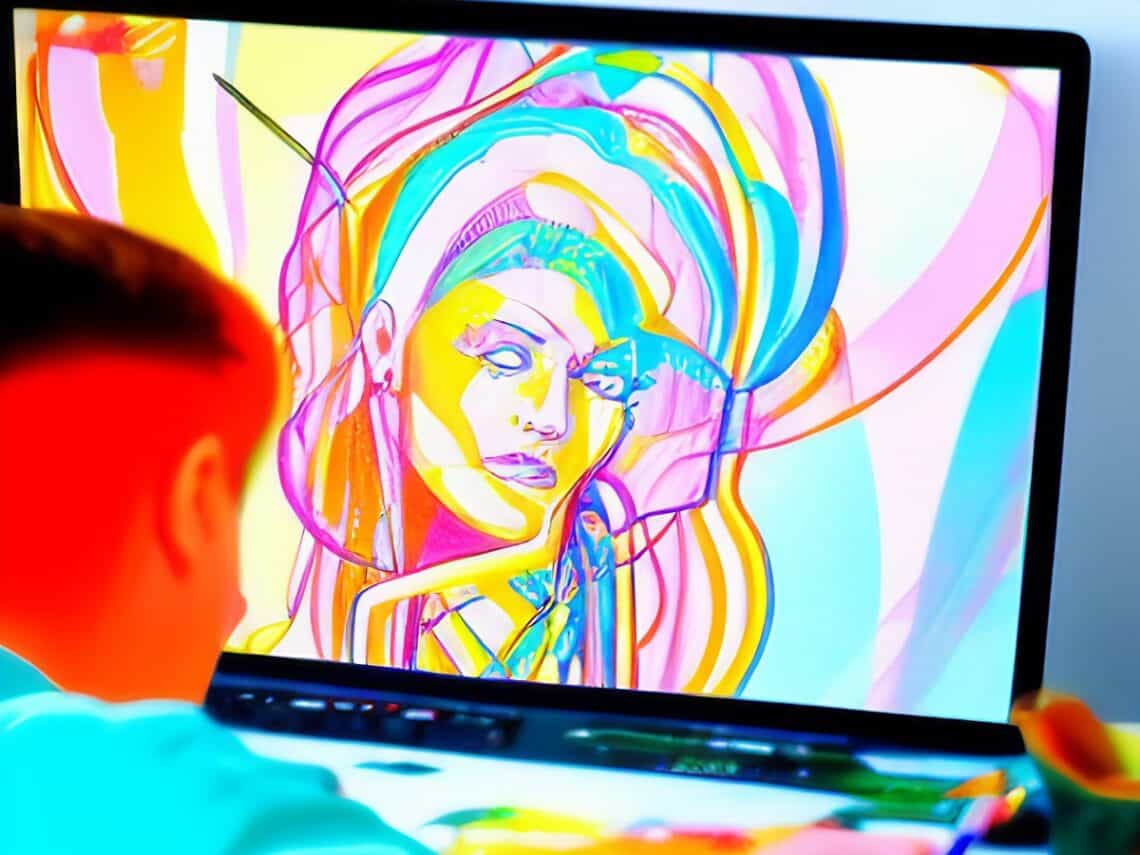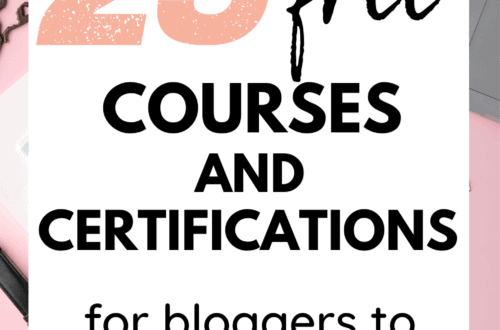
8 Ways to Make Money with AI Art
As artificial intelligence becomes more and more advanced, new opportunities are arising for aspiring entrepreneurs who want to create AI-generated art. There are many ways to make money from AI art, and now is the perfect time to jump into these revenue streams.
Disclosure: This post contains affiliate links. As an affiliate, I earn a commission on purchases.
1. Create digital art downloads or print-on-demand poster prints..
With the help of AI, you can create digital art or prints that can be sold online or in person. You can use tools like Jasper Art to create your artwork, and platforms like Etsy to sell it. You could also set up your own website shop if you prefer, rather than using a marketplace.
Or, you can look into companies that will print the art at a reasonable cost, then sell it in-person at holiday marketplaces or other local events.
For example, I created some fun digital art prints that I sell in an Etsy shop. Here’s an example of my favorite set of prints – a 3-part bundle focused on triathlon. This set is sold digitally for less than $10, and then customers can get it printed out at Walgreens, Staples, or other shops.

2. Create KDP coloring books.
KDP stands for Kindle Direct Publishing, and it’s a platform where you can sell digital and physical books on Amazon. One of my favorite use cases for AI is creating some fun coloring book pages using Jasper Art (or another AI art tool), and then putting them together into one cohesive file.
Once it’s complete, upload it to KDP and set your price. Amazon will then handle the rest, including printing and shipping to customers.
For example, here’s a fun coloring book page I created using Jasper Art. Now I wouldn’t personally use this particular print for a KDP product because of the whole name/likeness issue using a celebrity, but come on – how fun is that?!

3. Sell your artwork as stock photos.
Did you know that Shutterstock recently announced they are partnering with Open AI in order to integrate AI images into their database? From their press release, it appears they will be compensating contributors for their AI art contributions when those images are sold (though it’s still unclear exactly if this will pan out or how it will look). It would be worth keeping your eyes peeled for when this formally launches.
Keep in mind that certain other stock photo sites – cough, Getty, cough – have currently banned the sale of AI images on their platform, though. You’ll want to ensure that you follow any set guidelines where you plan to sell your stock images, such as if they are definitely allowed and/or if they require use of a particular AI dataset.
That said, there are other ways to sell stock photos as well. Maybe you put together a batch of 25-50 AI-generated stock photos that are perfect for your target audience, and sell it to them for a small fee. Or you could put together a smaller set, and use it as a freebie-opt in for your email list.
While bloggers and content creators are obviously a prime audience for this, “regular” folks might be interested in a set of photos as well if they’re made into fun quotes or sayings that could be printed out for wall art.
4. Create a children’s book in your niche.
If you’re good at coming up with stories, why not use AI to help you illustrate a children’s book in your niche?
For example, if you blog about running, you could create a clever children’s book that talks about topics like trying your best and/or the benefits of running. Or if you’re a dietitian, you could create an A to Z book about different foods.
AI can help you create some fun illustrations to go along with your story, which you can then format into a print-on-demand paperback using something like Kindle Direct Publishing.
I’m a little biased about this one, as my kiddo created his first children’s book using Jasper Art. “Jimmy’s Jungle Adventure” is proudly for sale on Amazon. My kiddo got so many lessons about business and entrepreneurship working on this project!

The one challenge that you can run into with this is that it’s still difficult to recreate the same characters. You can get around this by illustrating other things the book is talking about, or using prompts like “from behind, red shirt, black shorts” – so that you get the same general look of a character but don’t require the same face.
(PS – Feel free to show my kiddo some love and buy your own copy of his book.)
5. Offer custom art.
AI art is such a new field that there’s bound to be a lot of people out there who want to have some for their own homes or as gifts. If you’re feeling confident in your AI art skills, consider offering custom creations.
This could look like creating an online form where potential customers can fill out what they’re looking for, and then you create a piece accordingly. Or you could open up an Etsy shop (or similar) and take orders that way.
You could also team up with a local business who might be interested in having some AI-generated artwork on their walls – especially if it’s related to their industry/niche in some way. For example, maybe a new women’s gym would love some body-positive prints for their walls. You can get their ideas, execute them with AI, and charge them for the digital files which they then send off for printing and framing.
6. Develop other print-on-demand products.
From t-shirts to stickers to coffee mugs, it’s pretty easy to find a print-on-demand company that can help you sell your AI art in a variety of different formats.
Printful, Printify, and Redbubble are a few popular choices for this. You simply upload your artwork, choose the products you want to sell it on, and set your prices. You can sell on your own website (like a custom merch store) or you can sell through a marketplace like Etsy.
Here’s an example of some hilarious cheeseburger running leggings that I was testing out as a print-on-demand product using Printful. While I loved the funny look, the leggings were a little too thin for my liking, so I didn’t pursue them as a final product in my Etsy shop. However, if I found another vendor that had better quality leggings, I could totally see making a batch of fun running leggings with different prints.

7. Create NFTs.
NFTs, or non-fungible tokens, have been all the rage lately. I’ll admit that I’m not an expert here, but let me give you my basic understanding. NFTs are digital assets that can be bought, sold, or traded – but each one is unique, which makes them valuable.
As an AI artist, you could create NFTs of your artwork and then sell that online via the blockchain.
Will this become oversaturated? Probably. Is there still some opportunity? Maybe. As mentioned, it’s not something I have much knowledge about but I’ve heard this idea tossed around a few times and thought I’d mention it here.
8. Speak about AI Art.
This one’s a bit of a cop-out, because it’s not using the art itself per se. But if you’ve developed a lot of knowledge in this area (whether AI art or AI writing tools), the world is your oyster for speaking opportunities.
There are a lot of ways to make money from speaking, whether it’s through paid conferences, webinars, or even just giving talks to local groups and organizations. You could also develop an online course teaching others about AI art.
As an example, I spoke to a large group of dietitians at a major conference in 2022 about “Artificial Intelligence for Nutrition Entrepreneurs”. We covered some examples of AI in the nutrition field, but also covered how to use AI writing tools like Jasper as an entrepreneur and also explored a tiny bit about AI art (it was still so new when I gave that talk, I didn’t have a widely available tool to demo!).

The Bottom Line
Artificial intelligence art is still in its early stages, but there are already some fantastic opportunities for creative entrepreneurs to create revenue streams. It’s a perfect time to jump in and start experimenting – who knows, you might just be the next AI Picasso or Banksy.




